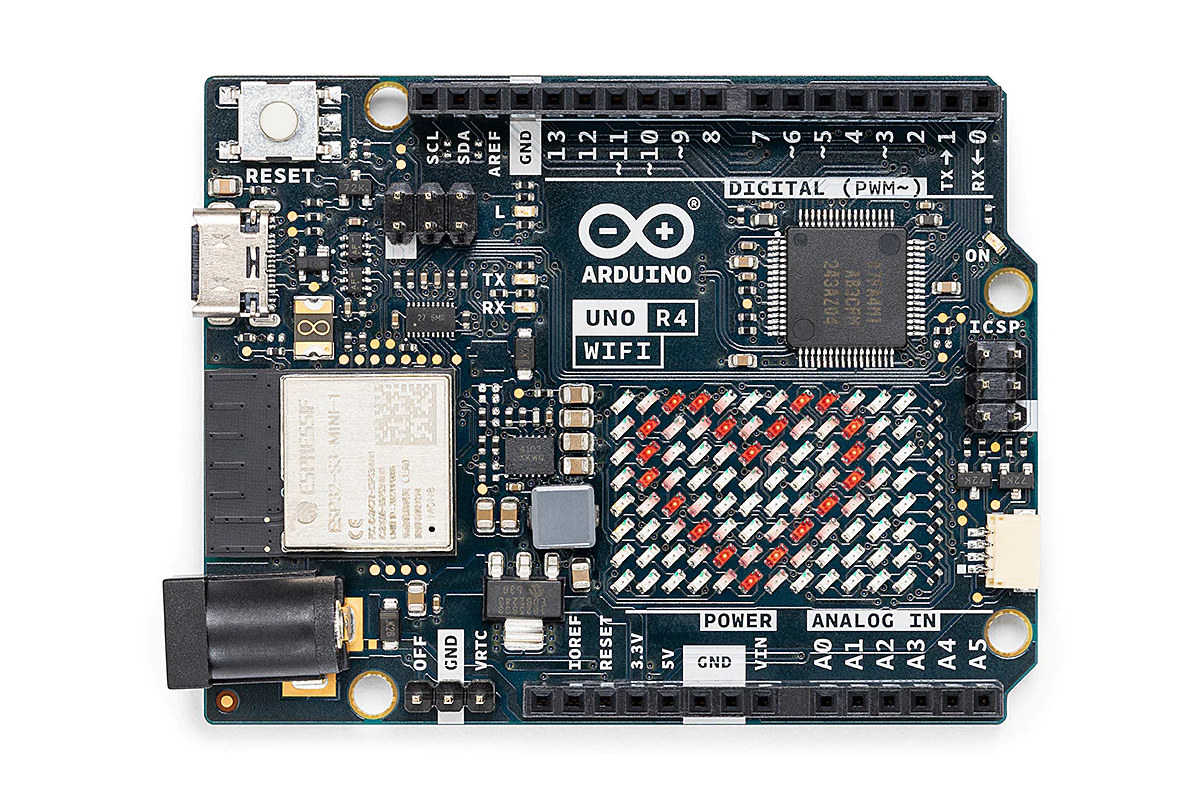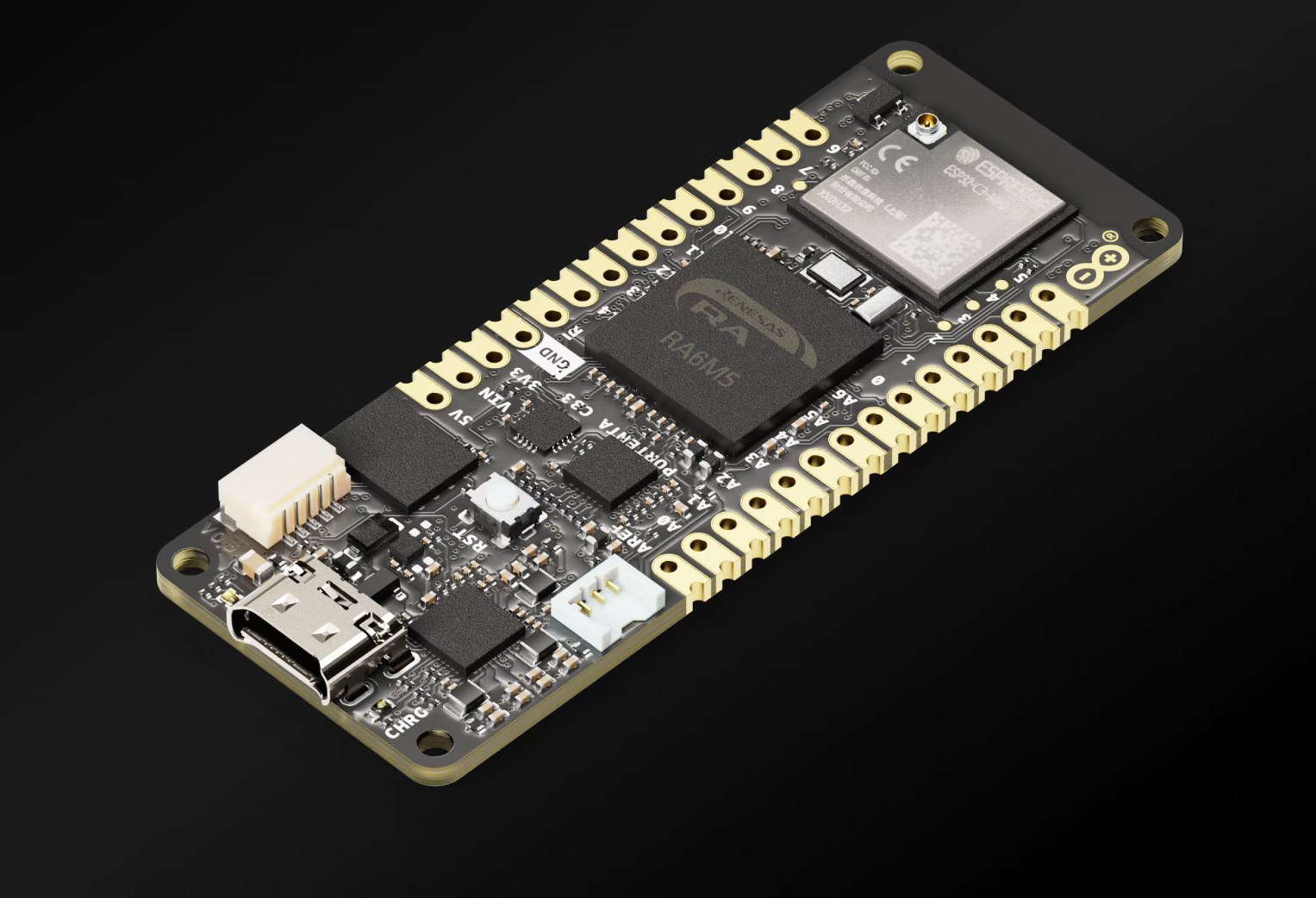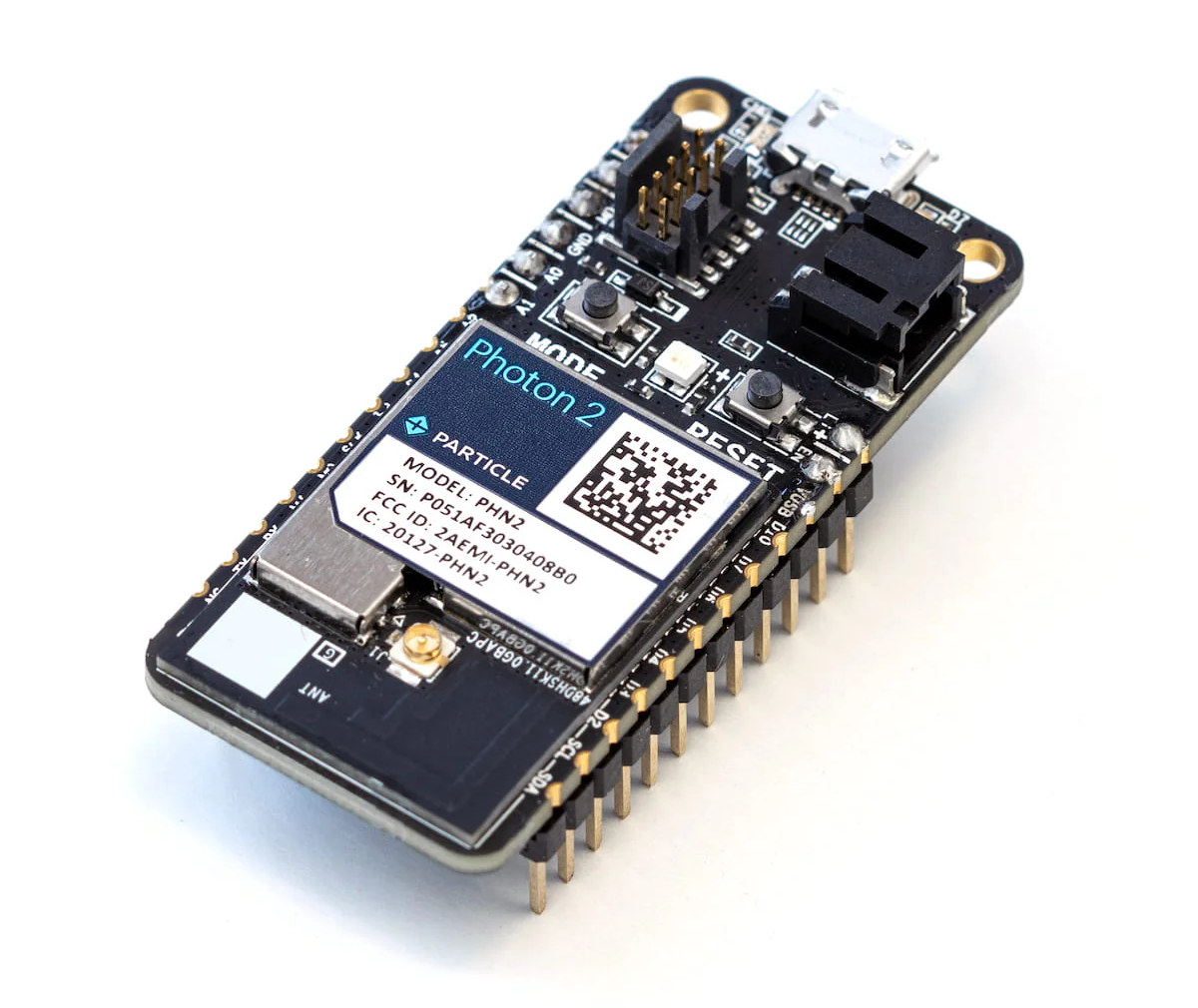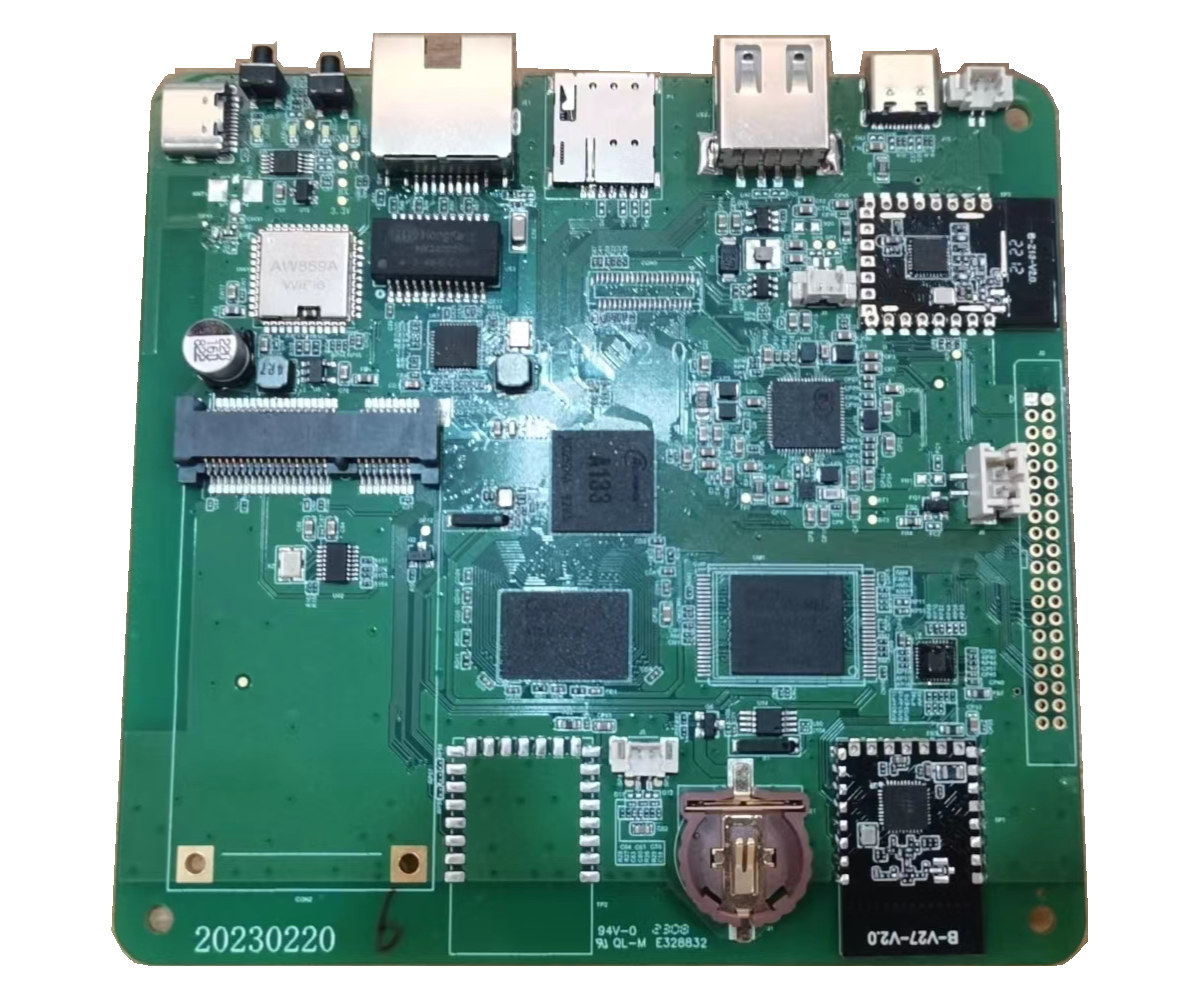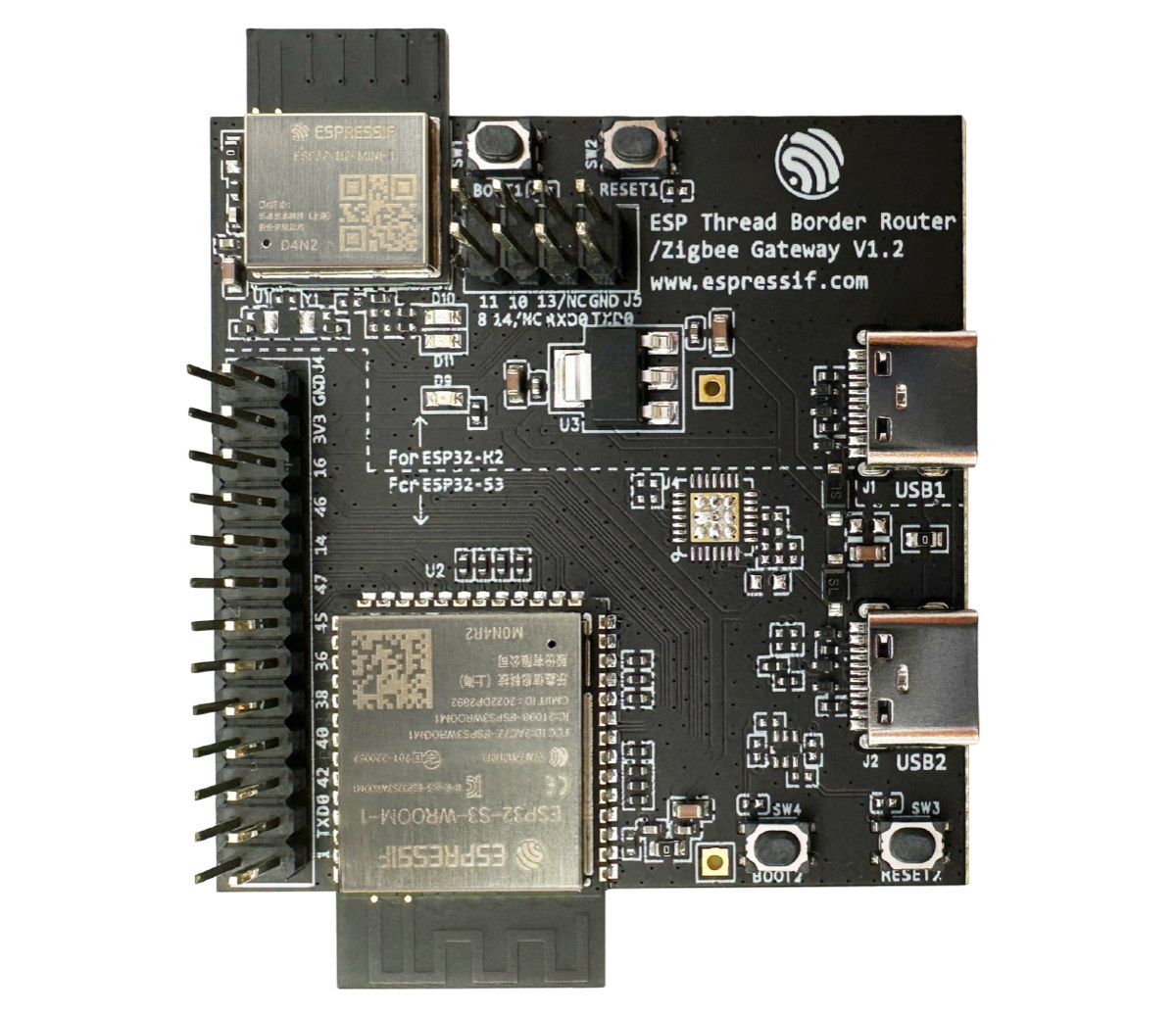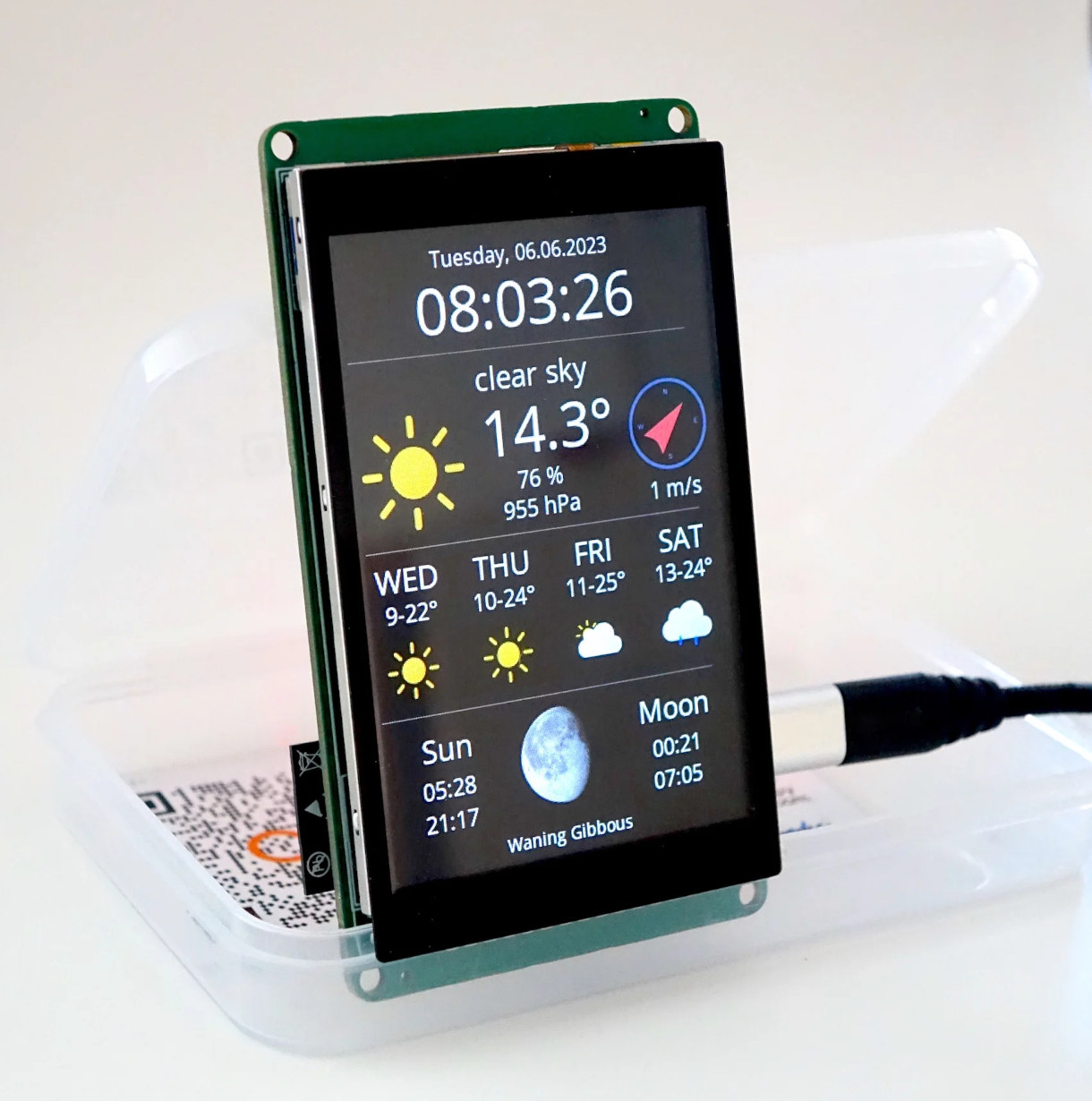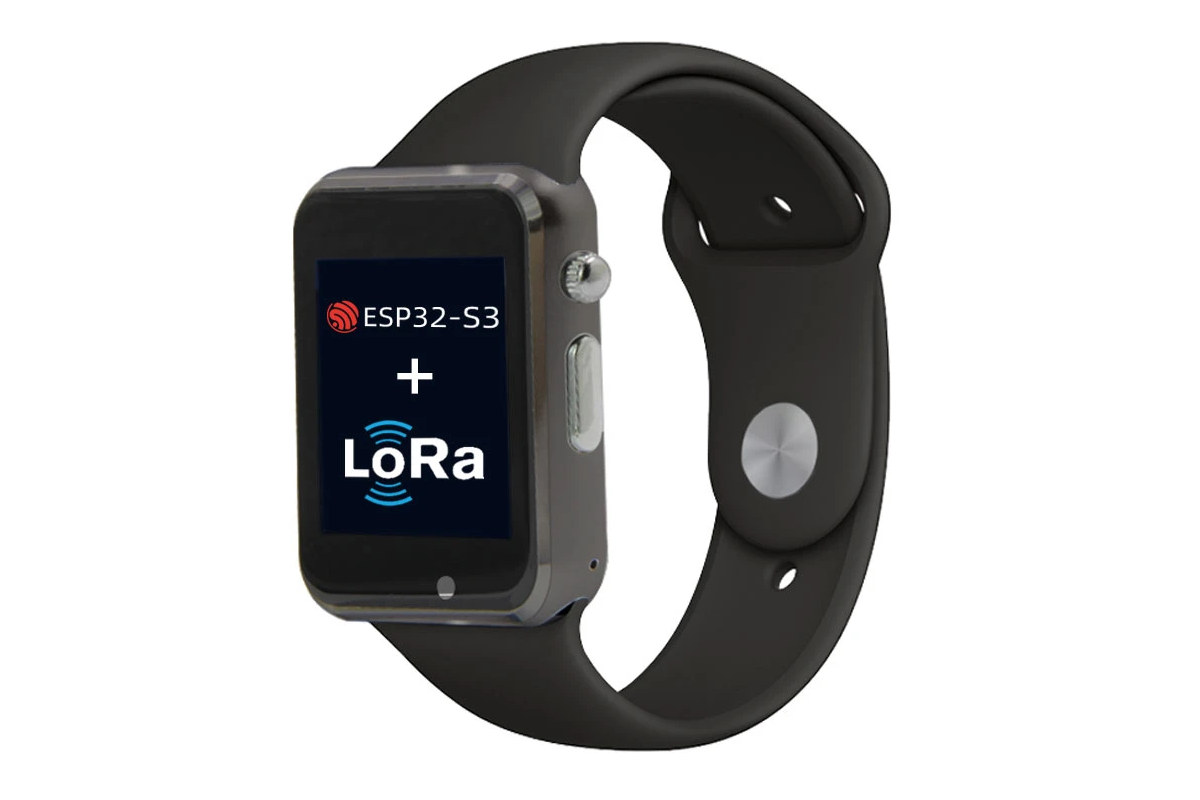Arduino UNO R4 Minima and WiFi boards powered by a Renesas RA4M1 32-bit Arm Cortex-M4F microcontroller and equipped with an optional ESP32-S3 WiFI & BLE module are now available for respectively $20 (18 Euros) and $27.50 (25 Euros) on the Arduino store. The Arduino UNO R4 Renesas RA4M1 board was initially unveiled during Arduino Day with most details, but not everything as the company had hidden one part of the board which we now know is for a 12×8 LED matrix and a Qwiic connector for expansion present on the UNO R4 WiFi only. Arduino UNO R4 specifications: Microcontroller – Renesas RA4M1 Arm Cortex-M4F MCU @ 48 MHz with 32KB SRAM, 256KB flash Wireless (Arduino UNO R4 WiFi only) – ESP32-S3-MINI-1 module based on ESP32-S3 dual-core Xtensa LX7 microcontroller with 512KB SRAM, 384KB ROM, WiFi 4 and Bluetooth 5.0 connectivity, PCB antenna Display (UNO R4 WiFi only) – 12×8 LED […]
Portenta C33 is a $64 Arduino Pro board based on Renesas RA6M5 Arm Cortex-M33 MCU
Arduino Portenta C33 is the latest board from the Arduino Pro family which the company dubs a “high-performance, low-price” solution based on a 200 MHz Renesas RA6M5 Arm Cortex-M33 microcontroller and equipped with a ESP32-C3 Wi-Fi and Bluetooth Low Energy module. The new board provides a cost-effective alternative to the Portenta H7 and X8 boards, but still offers wireless connectivity, a secure element for industrial-grade security, and compatibility with Portenta, MKR, and Nicla components. Portenta C33 specifications: Microcontroller – Renesas R7FA6M5BH2CBG Arm Cortex-M33 microcontroller @ up to 200 MHz with 512KB SRAM, 2MB Flash, Arm TrustZone, and Secure Crypto Engine 9 Storage – 16 MB QSPI Flash Connectivity 10/100M Ethernet PHY ESP32-C3 WiFi and BLE module USB – 1x USB Type-C high-speed port with Power Delivery support I/Os via 2x 80-pin high-density connectors, Arduino MKR headers with castellated hole, and a 5-pin I2C connector Storage – SD Card Networking – […]
Particle launches Photon 2 Realtek RTL8721DM dual-band WiFi and BLE IoT board, Particle P2 module
Particle has launched the Photon 2 dual-band WiFi and BLE IoT board powered by a 200 MHz Realtek RTL8721DM Arm Cortex-M33 microcontroller, as well as the corresponding Particle P2 module for integration into commercial products. The original “Spark Photon” WiFi IoT board was launched in 2014 with an STM32 MCU and a BCM43362 wireless module, but the market and company name have changed since then, and Particle has now launched the Photon 2 board and P2 module with a more modern Cortex-M33 WiFi & BLE microcontroller with support for security features such as Arm TrustZone. Particle Photon 2 specifications: Wireless MCU – Realtek RTL8721DM CPU – Arm Cortex-M33 core @ 200 MHz Memory – 4.5MB embedded SRAM of which 3072 KB (3 MB) is available to user applications Connectivity – Dual-band WiFi 4 up to 150Mbps and Bluetooth 5.0 Security Hardware Engine Arm Trustzone-M Secure Boot SWD Protection Wi-Fi WEP, […]
Zvidar Z-GW-V01 Smart Gateway runs Home Assistant on Allwinner A133 processor
Shenzhen Zvidar Technologies’ Z-GW-V01, also known as the Zvidar Smart Gateway is a single board computer powered by an Allwinner A133 quad-core Cortex-A53 processor and running Ubuntu with the Home Assistant open-source automation framework. The SBC provides Gigabit Ethernet, WiFi 5, and Bluetooth connectivity by default, but also supports plenty of optional wireless modules with Z-Wave, Zigbee, Thread/Matter, LoRa, or 4G LTE connectivity that are either soldered to the board connected by a mini PCIe socket. The board also includes a few USB ports, and it’s apparently possible to connect a 7-inch display and/or audio interfaces if needed. Zvidar Smart Gateway (Z-GW-V01) specifications: SoC – Allwinner A133 quad-core Cortex-A53 processor @ up to 1.6GHz with Imagination PowerVR GE8300 GPU with support for OpenGL ES3.2, Vulkan 1.1, OpenCL 1.2 System Memory – 1GB RAM (option for 512MB, 2GB, or 4GB) Storage – 8GB eMMC flash (option for 4GB, 16GB, or 32GB), […]
WLKATA Robotics Haro380 is a high precision industrial 6-Axis mini robotic arm (Crowdfunding)
WLKATA Robotics’ Haro380 is a high-precision industrial 6-axis mini robotic arm that can carry a payload of up to 500 grams and designed for education, engineering projects, and light manufacturing. We’ve covered some desktop robotic arms in the past such as the myCobot 280 Pi, but the HARO380 goes a step further with 0.05mm repeatability, a 6-axis harmonic reducer, and zero backlash. It is an upgraded version of the company’s entry-level Mirobot robotic arm introduced in 2019. Haro380 specifications and key features: Control board Unnamed MCU Base interface – RS485, DC power, expansion interface, USB interface I/Os – 2x digital inputs, 2x digital outputs Emergency switch Supply voltage – 24V DC Temperature Range – 5 to 40°C Humidity – 20 to 75% RH non-condensing 6-axis harmonic reducer Magnetic end effectors Repeatability – +/- 0.05 mm Max payload – 500 grams Reach – 380 mm Control interfaces – USB to serial, […]
Espressif ESP Thread Border Router board combines ESP32-H2 & ESP32-S3 wireless chips
Espressif Systems has launched the ESP Thread Border Router/Zigbee Gateway board based on ESP32-H2 (802.15.4) and ESP32-S3 (WiFi + BLE) modules following the contention of the Thread Interoperability Certificate V1.3 for the board and associated ESP Thread Boarder Router SDK built on top of the ESP-IDF framework and the open-source OpenThread protocol stack. The ESP Thread Border Router supports the protocol functions of the 1.3 Thread standard such as bidirectional IPv6 connectivity, Service Discovery Delegate, Service Registration Server, Multicast Forwarding, NAT64, and more, as well as product-level features such as a Web GUI for device configuration, automatic RCP (Radio Co-Processor) upgrade, RF coexistence, and so on. ESP Thread Border Router/Zigbee Gateway board specifications: Wireless modules ESP32-S3-WROOM-1 wireless module SoC – ESP32-S3 dual-core Tensilica LX7 microcontroller @ 240 MHz with 2.4 GHz 802.11n WiFi 4 and Bluetooth 5.0 LE connectivity Memory – 2MB PSRAM Storage – 4MB SPI flash PCB antenna […]
ESP32 WiFi Color Display Kit Grande is a soldering kit with a 3.5-inch touchscreen display
ThingPulse “ESP32 WiFi Color Display Kit Grande” is an IoT soldering kit based on the company’s ePulse Feather low-power ESP32 development board and a 3.5-inch 320×480 color TFT display with a capacitive touch interface. The kit can be used for all sorts of touchscreen display applications, including an Internet-connected weather station or a Bluetooth-connected Windows, Linux, or Mac OS information display. ESP32 WiFi Color Display Kit Grande content: ePulse Feather low-power ESP32 development board with 8MB Flash and 8MB SPRAM following Adafruit’s Feather form factor 3.5-inch 320×480 color TFT display (ILI9488 display controller) with capacitive touch Interface (FT6236 chip) Custom connector PCB to connect the ESP32 and the display Set of special pin headers to be soldered to the connector PCB On-off switch to be optionally soldered to the connector PCB Grove connector to be optionally soldered to the connector PCB 4x double-sided foam adhesive to secure the display to […]
T-Watch S3 ESP32-S3 smartwatch supports WiFi, Bluetooth LE, and LoRa connectivity
LILYGO T-Watch S3 is an ESP32-S3 WiFi and Bluetooth LE smartwatch with LoRa connectivity, and other interesting features such as an RTC, audio support, a vibration motor, and an infrared transmitter to control home appliances. The watch integrates a 1.54-inch color LCD display with capacitive touch, a button to turn on and off the device, and a USB port to charge the included 400 mAh battery. The T-Watch S3 sells in silver or “gun color” with a black wrist strap. T-Watch S3 specifications: Wireless MCU – Espressif Systems ESP32-S3 dual-core Tensilica LX7 @ up to 240 MHz with vector instructions for AI acceleration, 512KB RAM, 8MB PSRAM, 16MB flash, WiFi 4 and Bluetooth LE wireless connectivity Connectivity 2.4 GHz WiFi 4 (802.11 b/g/n) Bluetooth LE 5.0 Semtech SX1262 LoRa RF transceiver: 433 MHz, 868 MHz, 915 MHz Display – 1.54-inch 16-bit color LCD display with 240×240 resolution, capacitive touch; ST7789V […]


